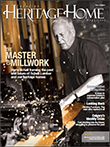A Balancing Act: Understanding the art of balancing modern comforts with heritage aesthetics in historic homes

Balancing modern comforts with heritage aesthetics in historic homes requires a thoughtful blend of period-appropriate updates and discreet technology integration.
Reviving the Past: Techniques to uphold historical accuracies in heritage home restorations

Reviving historical homes through heritage restoration balances historical accuracy with modern functionality, emphasizing traditional craftsmanship, authentic materials, and expert guidance for a tribute to architectural heritage.
A Burning Passion: Secrets of antique fireplaces in heritage homes
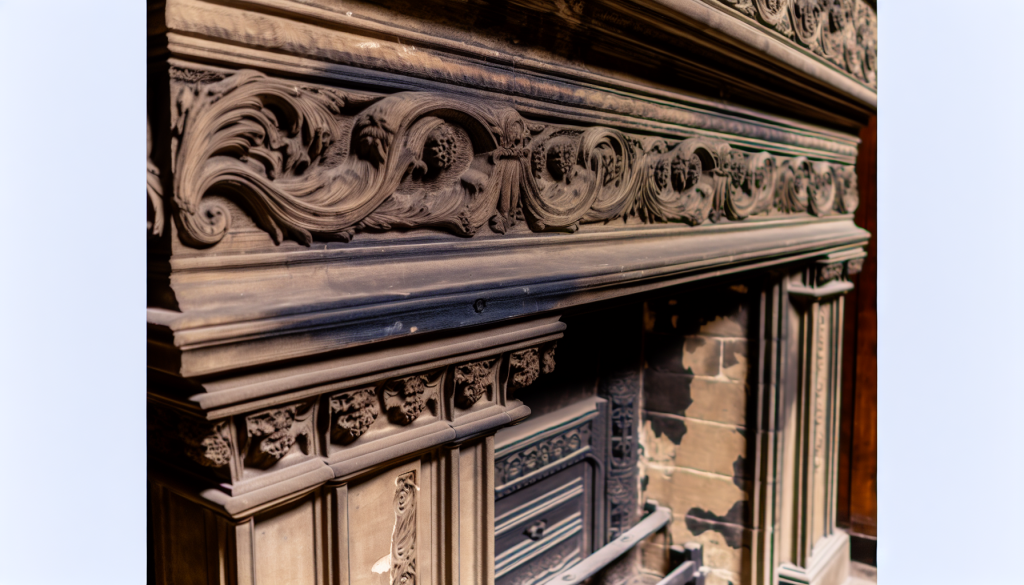
Stepping into a heritage home, one is often captivated by the majestic presence of antique fireplaces that stand as timeless focal points in the grandeur of the past. These historical treasures not only radiate warmth but also hold within them stories of craftsmanship, materials, and design that whisper secrets of bygone eras. From the rugged elegance of stone-carved masterpieces to the intricate wooden mantels showcasing exquisite artistry, antique fireplaces unveil the geographical and historical contexts of their creation.
Each material used in crafting these fireplaces, whether the enduring strength of limestone or the intricate beauty of carved wood, speaks of resources and skills prevalent in their respective periods. The design of an antique fireplace offers a glimpse into the architectural trends of its time – from the elaborate embellishments of the Victorian era to the classic proportions of the Renaissance period. The awe-inspiring craftsmanship required to shape these masterpieces reflects not only technical expertise but also a deep reverence for the art of creation.
Personalized touches such as family crests, mottoes, or symbolic motifs found in antique fireplaces add a unique layer of history, turning these functional objects into cherished heirlooms. Preserving the legacy of these antique marvels demands a delicate balance of cleaning, repairing, and using historically accurate techniques to safeguard their original allure. Such dedicated efforts ensure that these architectural gems continue to stand the test of time, inviting us to bask in the rich tapestry of craftsmanship that defines our heritage.
Renovating Historic Homes: Navigating the plumbing challenges

Renovating historic homes presents a unique set of challenges and rewards, particularly when it comes to updating the plumbing system. These ventures demand a delicate balance: preserving the home’s character while ensuring modern functionality and efficiency. Here’s how to navigate the complex terrain of renewing the plumbing in your historic gem.
Understanding the Current System
The first step is to thoroughly assess the existing plumbing. Many historic homes have pipes made from materials now considered unsafe or inefficient, such as lead or galvanized steel. Understand what you’re working with by possibly hiring a professional who specializes in historic homes to evaluate your system’s health, adherence to current codes, and efficiency.
Research and Honor Historical Integrity
Before making changes, research your home’s architectural era. Understanding the original materials and methods used in your home’s plumbing can guide you in making renovations that respect its historical integrity. Consider how changes might affect the home’s architecture and aesthetics. While modern PVC pipes are efficient, they may not suit your home’s period. Sometimes, replica materials offer modern functionality with a traditional look.
Modern Functionality Meets Historical Aesthetics
Striking a balance between updating the plumbing for functionality and maintaining the home’s historic character is key. Use modern materials that echo the look of the originals. For example, PEX piping offers a flexible and durable solution that can be threaded through walls and floors with minimal disruption, preserving plaster and masonry work. For visible fixtures, consider reproduction or salvaged pieces that match the period.
Navigate Codes and Regulations
Upgrading plumbing in a historic home often means navigating a maze of building codes and historic preservation standards. Engage with local historic preservation societies and municipal building departments early in your planning process. They can provide guidelines and might offer grants or tax incentives for historically sensitive renovations. Always ensure your plans comply with both local regulations and best practices for historic preservation.
Plan for Efficiency and Sustainability
Upgrading your home’s plumbing offers the perfect opportunity to incorporate water-saving technologies. Low-flow toilets, showerheads, and faucet aerators can significantly reduce water usage without compromising the home’s aesthetic. Consider installing a greywater system or rainwater catchment for garden irrigation, keeping sustainability in mind while honoring your home’s heritage.
Hiring the Right Professionals
Choosing contractors who specialize in historic homes is crucial. They can navigate the intricacies of working within a historic structure, preserving its integrity while upgrading its systems. Look for professionals with experience in both modern plumbing techniques and historic preservation, ensuring they understand the importance of maintaining your home’s character.
Document Everything
As you navigate the renewal process, keep detailed records of all decisions, purchases, and changes made. This documentation can be invaluable for future maintenance, resale, or further renovation projects. It also serves as a historical record of the care taken to preserve and update the home.
Renewing the plumbing in a historic home is no small task. It requires careful planning, understanding of historical significance, and a commitment to preserving the essence of the home while ensuring it meets modern standards of safety and comfort. With a thoughtful approach and expert help, you can ensure your historic home remains both a testament to the past and a comfortable, functional space for the future.
A Rich Tapestry: Exploring geographical variations in Canadian heritage home styles

In the intricate tapestry of Canada’s geographical landscapes lies a fascinating array of heritage home styles, each telling a unique story of the country’s architectural and cultural evolution. From the resilient row houses of St. John’s, Newfoundland to the imposing Victorian mansions of Halifax, and from the French-inspired cottages of Quebec to the practical Ontario farmhouses, Canada’s heritage homes are as diverse as the settlers who shaped them.
Traveling through the provinces, one can witness the fusion of architectural influences, from British colonial designs in Ontario to the Arts and Crafts movement in British Columbia. Each region’s heritage homes speak to the ingenuity and adaptability of Canadians in response to their environments, as well as the enduring legacy of cultural integration.
As we journey through the vast Canadian landscape, from the rugged East Coast to the majestic Rocky Mountains and beyond, the rich tapestry of heritage home styles serves as a testament to the resilience, creativity, and diversity of the people who have called Canada home. This exploration not only reveals the architectural splendor of the past but also sheds light on the intricate stories woven into the very fabric of Canada’s heritage homes, each reflecting a chapter in the country’s captivating narrative of settlement and evolution.
Exploring the Use of Stain Glass Art in Canadian Heritage Home Design
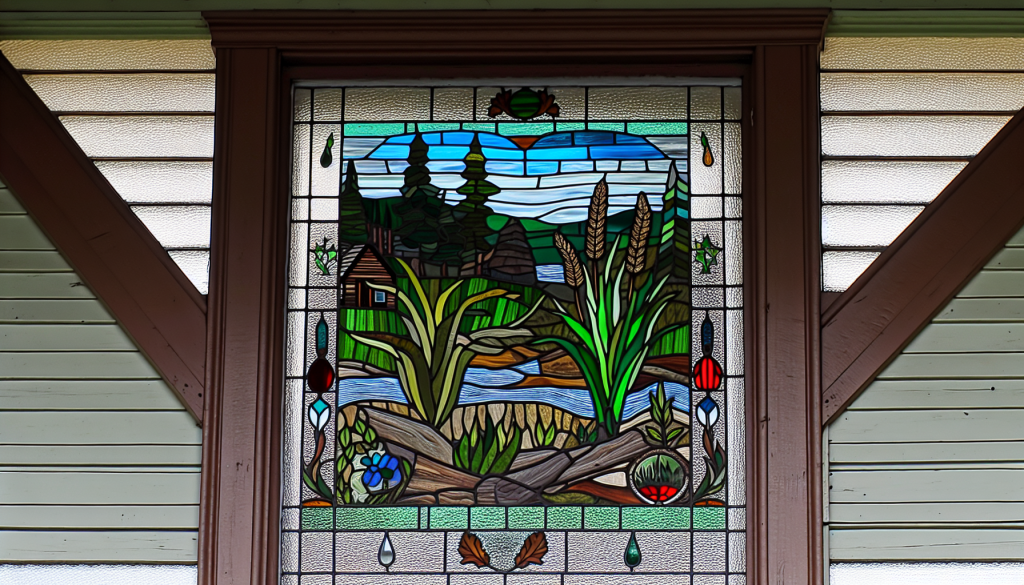
Stained glass art, a hallmark of decorative opulence, has woven itself into the fabric of Canadian heritage home design for centuries. While traditionally associated with religious spaces, stained glass in residential architecture across Canada has undergone a remarkable evolution, reflecting not only aesthetic trends but also cultural values and technical advancements.
Initially inspired by European designs, particularly the intricate patterns seen in Gothic cathedrals, stained glass in Canada gradually embraced a distinct identity. Reflecting the evolving Canadian ethos, these glassworks began incorporating motifs of indigenous flora and fauna, as well as scenes inspired by the local landscape. This shift marked a departure from purely religious themes towards a more personalized expression of local identity and individual meanings.
During the Victorian and Edwardian eras, stained glass emerged as a prominent embellishment in Canadian homes, symbolizing not just wealth and sophistication, but also serving practical functions like privacy and insulation. The intricate designs and high-quality glass used in these pieces became indicators of social status, highlighting the homeowner’s taste and refinement.
Cities like Toronto, Victoria, and Montreal bear witness to the enduring influence of stained glass in heritage home design. In areas like Cabbagetown in Toronto, elaborate stained glass windows adorned with floral patterns and natural motifs reflect a time when bringing the outdoors inside was in vogue. Montreal’s historic districts exhibit a blend of European elegance and Canadian ruggedness in their stained glass, often incorporating local symbols like the maple leaf or native wildlife into traditional patterns.
The production of stained glass in Canada has also played a significant role in shaping its prominence in heritage homes. While initially reliant on imported glass, Canadian artisans began producing their glass by the late 19th century, adding a distinctive touch to their creations. The texture and color variations of locally-made glass soon became highly sought after both within the country and beyond, contributing to the art form’s legacy.
As these heritage homes age, the preservation and restoration of stained glass have become essential endeavors. Conservation specialists painstakingly work to safeguard the vibrancy and integrity of these artworks, ensuring they remain a lasting tribute to Canadian craftsmanship. Additionally, many of these artisans blend traditional techniques with contemporary designs, breathing new life into the tradition of stained glass art in Canadian home design.
Delving into the world of stained glass in Canadian heritage homes offers a glimpse into the nation’s cultural tapestry. Far more than mere adornments, these luminous artworks serve as poignant storytellers, encapsulating social narratives, environmental appreciation, and artistic sensibilities of their times. They underscore the significance of safeguarding our architectural heritage, celebrating the splendor and skill that define Canada’s residential vista.
Rediscovering the Craftsmanship: Stone Masonry Techniques in Heritage Homes

In the realm of heritage homes, the primal allure of stone masonry stands as a testament to the enduring charm and resilience of traditional craftsmanship. This ancient technique not only shelters humans but also tells stories of bygone eras through its artistry. Rediscovering and preserving old-world masonry techniques in heritage homes is vital for maintaining historical integrity and passing down these architectural marvels to future generations.
One of the oldest methods, dry stone walling, showcases true craftsmanship by interlocking stones without mortar, with structures lasting for centuries. Mortared stone work, utilizing lime-based mortars historically, allows for intricate designs and architectural possibilities. Ashlar masonry, cutting stones precisely for a refined appearance, reflects past builders’ artistic visions.
Preserving heritage homes requires a deep understanding of these traditional techniques and materials, ensuring authenticity in restorations. Modern masons must respect the original builders’ intentions and styles while addressing deterioration and conservation challenges. By bridging the past and future through skilled application of age-old methods, masons play an essential role in safeguarding architectural heritage for generations to come.
Exploring the Art of Balancing Authenticity and Comfort in Heritage Home Renovations
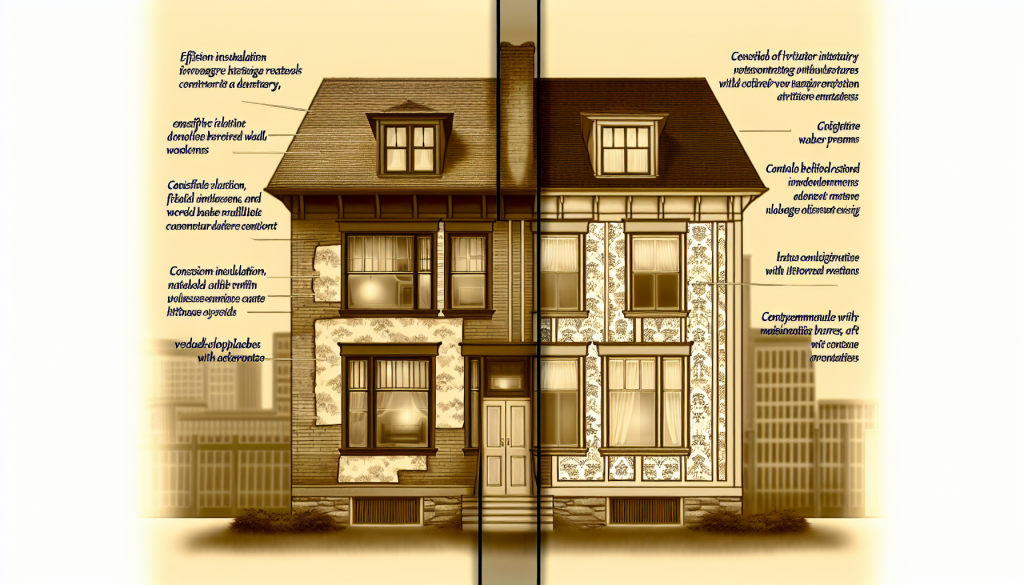
In the realm of heritage home renovations, a delicate dance unfolds between preserving the past and embracing the present. It’s a journey that requires a deep appreciation for the unique narrative each home holds—architectural nuances, historical significance, and timeless appeal. To strike a harmonious balance, one must honor the old-world craftsmanship that defines these spaces while seamlessly integrating modern comforts.
The key lies in understanding the soul of the home. Through meticulous research and consultation with experts, homeowners and designers can grasp the essence of the era and architectural style, ensuring that any renovations enrich the home’s historical narrative rather than overshadow it.
Central to this preservation is the safeguarding of signature elements that breathe life into these spaces. From original hardwood floors to intricate moldings, these features are the heart of the home, preserving stories of the past. The challenge lies in restoring them authentically, celebrating their imperfections as testaments to history.
As modern living demands contemporary amenities, the integration of modern comforts must be approached with sensitivity. Heating and cooling systems, plumbing, and electrical wiring should be discreetly incorporated to maintain the home’s aesthetic harmony. Kitchens and bathrooms, often requiring major updates, can be modernized without losing their historical charm by blending traditional designs with modern features.
Materials play a crucial role in marrying authenticity with comfort. Opting for modern materials that mimic the look and feel of traditional ones while offering enhanced durability can ensure the home’s longevity without compromising on historical integrity.
In the intricate tapestry of heritage home renovations, the ultimate goal is to create a space where the past and present coexist in perfect harmony. By embracing this thoughtful approach, homeowners can transform their heritage homes into living, breathing spaces that honor their legacy while catering to the needs of contemporary living. The result is a seamless blend of old and new, where the spirit of the past is preserved for future generations to relish and cherish.
Unearthing the Craftsmanship: Woodwork Techniques in Canada’s Heritage Homes
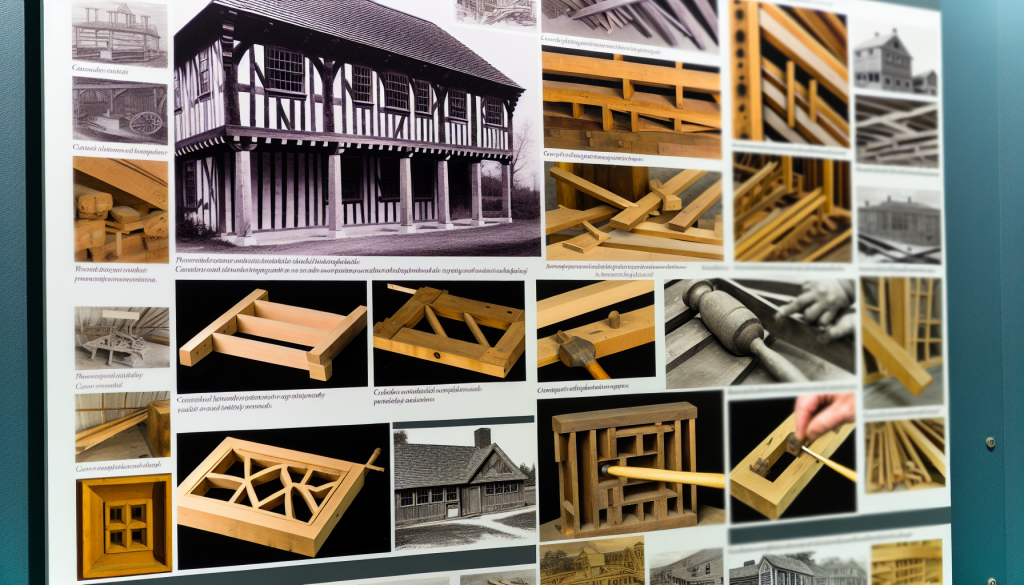
Canada’s heritage homes stand as enduring testaments to the country’s architectural and cultural history, where the craftsmanship of yesteryears continues to influence modern woodworking. Unearthing the craftsmanship inherent in these storied buildings offers a fascinating journey through the evolution of woodwork techniques that have shaped Canada’s residential landscape. This blog post delves into the traditional and innovative woodworking practices embedded in the construction and restoration of Canada’s heritage homes.
The art of woodwork in heritage homes is not just about the aesthetic charm; it’s a narrative of the country’s ecological, social, and technological changes. Initially, the choice of wood and the techniques employed were heavily influenced by the local environment. For instance, the abundant forests of Eastern Canada made wood a natural choice for building materials, with local species like Eastern White Pine and Red Cedar frequently used in construction.
One of the fundamental woodworking techniques visible in heritage homes is timber framing, a method that utilizes large timber posts and beams to create the structure’s skeleton. This technique, imported by European settlers, has been integral to Canadian architectural history. Timber framing is not merely about structural integrity; it’s an art form that showcases precise joinery and the natural beauty of wood. The intricate dovetail joints, mortise and tenon connections, and wooden pegs exemplify a time when craftsmen relied on sheer skill and hand tools.
As we move from structure to ornamentation, the craftsmanship in heritage homes reveals a world of decorative detail. From the hand-carved banisters and mouldings to the elaborate door frames and mantelpieces, these elements reflect the social trends and technological advancements of their eras. The Victorian and Edwardian homes, for example, are renowned for their intricate woodwork, featuring ornate designs that mirror the opulence of the period. These decorative pieces were not only a display of wealth and taste but also a showcase of the woodworkers’ expertise in turning wood into art.
Preserving these woodwork techniques is crucial in maintaining the character and integrity of Canada’s heritage homes. Restoration efforts often involve meticulous research to match the original craftsmanship as closely as possible. Modern woodworkers involved in these projects must possess a deep understanding of historical methods while also applying contemporary techniques to ensure durability. The use of traditional tools, alongside modern technology like CNC routers for precision work, exemplifies the blend of past and present in preserving heritage homes.
Moreover, sustainability has become a key focus in preserving and restoring heritage homes, reflecting a renewed appreciation for wood’s environmental benefits. The push towards using locally sourced and reclaimed wood not only aligns with ecological principles but also ensures that the repair and restoration efforts remain true to the original construction practices.
In conclusion, unearthing the craftsmanship in Canada’s heritage homes reveals more than just the beauty of woodwork. It uncovers the evolving story of Canadian society, the adaptation to and respect for the natural environment, and the timeless appeal of wood as a building material. As we continue to preserve these historical structures, we’re not just safeguarding Canada’s architectural legacy; we’re honoring the craftsmanship that has, and continues to, shape the nation’s built environment.
Heritage Action Plan in Banff: Preserving the Canadian Rockies’ Built Heritage

In the breathtaking Canadian Rockies of Banff, a concerted effort is underway to preserve the region’s rich built heritage. The town has recently adopted a comprehensive heritage action plan that outlines strategies and provisions to conserve its architectural treasures over the next five to ten years. One of the key components of this plan is […]

